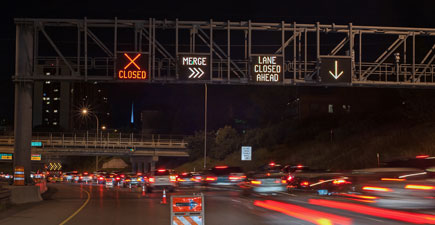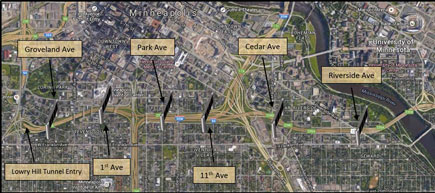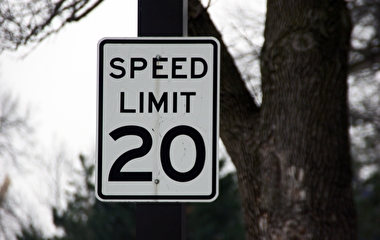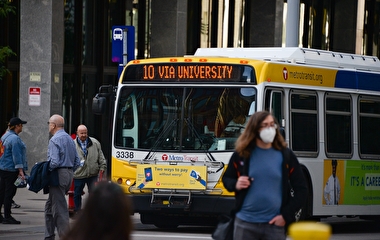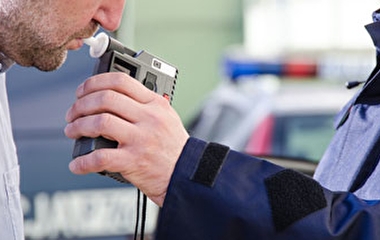Intelligent lane control signs (ILCS) are displays above lanes that warn drivers of incidents ahead. They’re becoming increasingly popular in high-crash areas of busy metropolitan areas as a way to reduce congestion and improve safety. Their effectiveness, however, depends on driver compliance.
In a recent project, U of M researchers set out to determine whether drivers are, in fact, heeding the messages displayed via these high-tech warning systems. To do so, they studied the effectiveness of ILCS messages during incidents in the high-crash area of westbound I-94 along the south edge of downtown Minneapolis.
“This two-mile stretch of road experiences more crashes than any other freeway location in Minnesota, with crash events observed almost every other day on average,” says John Hourdos, director of the Minnesota Traffic Observatory and the study’s principal investigator. “This section of highway is also the site of our unique field laboratory that allows us to gain a detailed picture of the area through seamless surveillance coverage and precise traffic measurements.”
Minneapolis.
For the MnDOT-funded project, researchers selected 28 incidents from among the 481 that occurred between 2012 and 2013. They thoroughly analyzed each of these 28 events using loop detector and lane-change data and also performed statistical analyses to test several hypotheses.
“Instead of taking the more traditional approach of testing and measuring the effect an ILCS system has on overall congestion, we aimed to evaluate and quantify the effect the system has on drivers—specifically, on inducing desirable lane selection behavior,” says Hourdos. “Comparing and modeling the lane-change rates was the centerpiece of this research.”
Based on the project results, researchers concluded that the use of ILCS for incident management has a significant effect on driver behavior, specifically in prompting proper lane selection during capacity-reducing incidents. Other project findings include:
- Using more than two sets of signs upstream of an incident produces no additional benefit.
- Strong messages such as “Lane Closed Ahead” and “Merge” do the best job of inducing lane change.
- The presence of first responders has an observable positive effect on lane change but is not as effective as instructions on an ILCS.
- ILCS can become ineffective under stop-and-go conditions.
“We saw that the ILCS were capable of emptying the incident lane well upstream of the obstruction caused by the incident, even when the next lane was considerably congested,” says Hourdos. “After a certain point, the preferred operational strategy may be to display an innocuous message such as ‘Use Caution’ rather than instructing drivers to change lanes in order to preserve the storage capacity of all lanes upstream of an incident.”
“The study showed that the ILCS are effective in changing driver behavior, but it did not compare how much additional benefit they provide compared to standard variable message signs,” says Brian Kary, MnDOT freeway operations engineer. “Although we saw measurable benefits from the deployment through this study, more research is needed to see if the ILCS are a cost-effective approach to managing traffic during incidents.”
